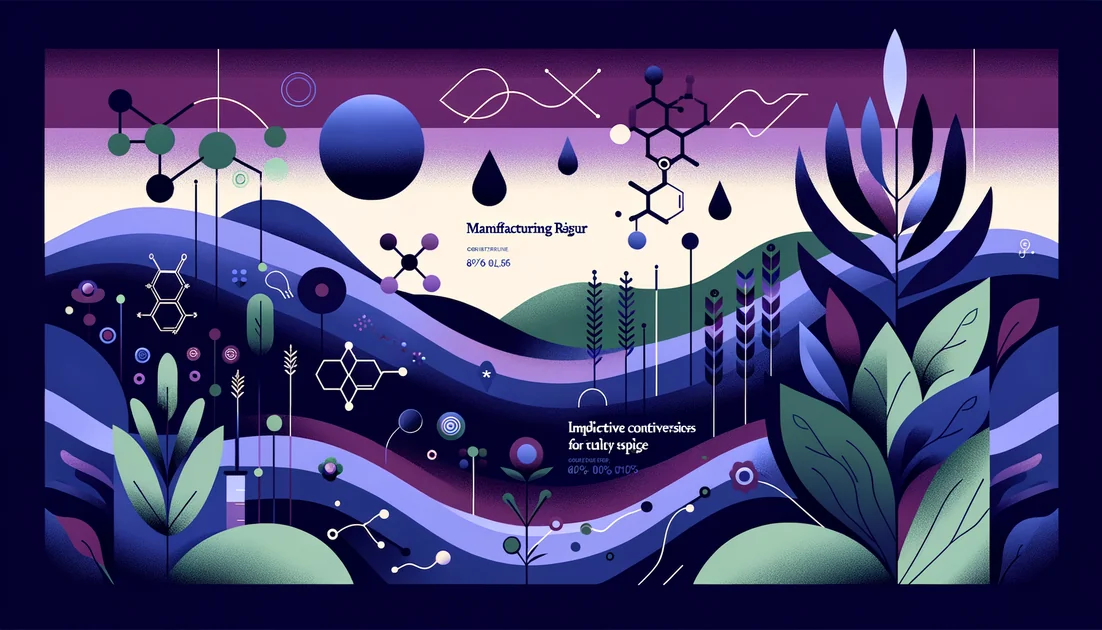
Vitamin B Complex + Omega-3
Brain Fuel That Slows Cognitive Decline
Quick Summary
The Verdict
Dual CoreEssential Core: Vitamin B Complex (with sensible B6, adequate folate and B12), Omega-3 (EPA+DHA)
Beneficial Additions: Choline (food or supplement) to support DHA transport, Fish intake (2 servings/week) to backstop omega-3 status
Optional Additions: Magnesium if your diet is low (general support; not combo-specific)
- •You want proven reductions in heart attack or stroke from this combo alone
- •You take high-dose B6
- •Or you are on strong blood thinners without clinician oversight.
The Synergy Hypothesis
When B6/folate/B12 are adequate, they lower homocysteine and keep methylation running, which supports the body's phosphatidylcholine 'ferries' that carry DHA to the brain. With more DHA delivered and inflammation calmed, neurons keep their membranes flexible and signals sharp—so the whole system runs better than either nutrient alone in people who are low in one of them. [1][2][3][10]
How the system works →
Picture a factory town (your brain). B vitamins power the factory's maintenance crew: they dispose of homocysteine waste and keep methylation machinery humming. That machinery makes phosphatidylcholine, the ferry that hauls DHA from the liver upstream to brain docks. Omega-3 brings the DHA and EPA 'building bricks' and helps the town fire brigade resolve flare-ups. If either the ferries (B-vitamins/methylation) or the bricks (omega-3s) are lacking, repairs lag. Trials in older adults with memory complaints show that B-vitamin benefits show up when omega-3 status—especially DHA—is already good, supporting this two-part system. [1][2][3]
Solo vs Combination
Solo B-complex can lower homocysteine and, in select high-risk elders, slow brain shrinkage. Solo omega-3 supports membranes and triglycerides. Together, early human data suggest B-vitamin benefits for cognition show up mainly when omega-3 (especially DHA) status is high—so the combo may beat either alone in under-fueled people. For heart events, combining them didn't outperform either alone in a large factorial trial. [1][2][3][4]
The Ingredients
Vitamin B Complex +
synergist• essential
Keeps homocysteine low and your body's 'methylation' switch on, which supports brain energy and helps make the phosphatidylcholine "ferry boats" that carry DHA to the brain. [6][9][10][3]
Works Alone?
Yes
Needs combination
In This Combo
Use a B-complex that keeps B6 at 2–10 mg/day, folate 400–800 mcg DFE (or 400–800 mcg folic acid/5-MTHF), and B12 250–500 mcg/day.
(dose-sparing effect)
Cost: $8–20/month
What if I skip this? (high impact, combo breaks)
Omega-3 +
synergist• essential
Supplies DHA/EPA to rebuild flexible brain cell membranes and makes inflammation 'cool down' faster, which pairs well with B-vitamins' homocysteine-lowering. [5][7]
Works Alone?
Yes
Needs combination
- •Lowers triglycerides and may modestly help some cardiovascular endpoints at adequate doses
- •Brain effects are mixed unless status is low. [7]
In This Combo
1,000–2,000 mg/day EPA+DHA with a meal containing fat.
(dose-sparing effect)
Cost: $15–35/month (quality fish or algal oil ~1–2 g EPA+DHA/day)
What if I skip this? (high impact, combo breaks)
How They Work Together
Vitamin B Complex + Omega-3
dual pathway
Think of your brain like a neighborhood: B vitamins run the street-sweepers that keep homocysteine trash from piling up and keep the road-paint fresh (methylation), while omega-3 delivers flexible bricks to rebuild houses (cell membranes) and calms neighborhood alarms (inflammation). Together the streets stay clear and homes stay sturdy. [1][2][3][5][6][10]
B-complex → homocysteine↓ → PC (DHA ferry) ↑ ; Omega-3 (DHA/EPA) → membranes & inflammation↓ → cognition
Street-sweepers + building bricks
Vitamin B Complex + Omega-3
enhances absorption
- •No real absorption boost either way
- •They don't get in each other's way.
B vitamins are water-soluble and use different doors into the body than oily omega-3s. No convincing human data shows one makes the other absorb better or worse. [13]
B-complex ↔ Ω-3 (no PK effect)
Two trains on different tracks
How the system works in detail →
Picture a factory town (your brain). B vitamins power the factory's maintenance crew: they dispose of homocysteine waste and keep methylation machinery humming. That machinery makes phosphatidylcholine, the ferry that hauls DHA from the liver upstream to brain docks. Omega-3 brings the DHA and EPA 'building bricks' and helps the town fire brigade resolve flare-ups. If either the ferries (B-vitamins/methylation) or the bricks (omega-3s) are lacking, repairs lag. Trials in older adults with memory complaints show that B-vitamin benefits show up when omega-3 status—especially DHA—is already good, supporting this two-part system. [1][2][3]
How to Take This Combination
Timing Protocol
Doses
Vitamin B Complex: Use a B-complex that keeps B6 at 2–10 mg/day, folate 400–800 mcg DFE (or 400–800 mcg folic acid/5-MTHF), and B12 250–500 mcg/day.
Omega-3: 1,000–2,000 mg/day EPA+DHA with a meal containing fat.
⚠️ Order matters
- 1.
Adequate B6/folate/B12 keep homocysteine low and methylation 'on'.
- 2.
Methylation helps generate phosphatidylcholine ferries (PEMT pathway).
- 3.
Phosphatidylcholine carries DHA from liver to brain.
- 4.
DHA/EPA rebuild membranes and help resolve brain inflammation.
Can add:Choline-rich foods (eggs, salmon) or choline supplement to support PC 'ferries' [11], Mediterranean-style diet with fatty fish 2x/week [12]
Should avoid:High-dose vitamin B6 long term (neuropathy risk) [7][8], Starting high-dose omega-3 if you're on warfarin/DOACs without medical guidance (bleeding monitoring varies). [16][17][18]
The Evidence
4 combination studies — studied together 0 pharmacokinetic, 3 clinical, 3 mechanistic
View key study →
VITACOG MRI sub-study: B vitamins slowed brain atrophy only in participants with high baseline omega-3s; ~40% slower atrophy vs placebo. (Post-hoc within RCT). [^2] [2]
- •Suggestive cognitive benefit when both B-vitamin status and omega-3 (DHA) status are high
- •No added benefit for hard cardiovascular outcomes in 2×2 factorial trial.
Read full technical summary →
There's no absorption boost here, and cardiovascular event trials haven't shown a win when you combine them. But in older adults with memory problems, two randomized trials found that B-vitamin treatment only helped when omega-3 levels were already high, and a third analysis suggested the effect tracks with DHA status—pointing to a "both-tanks-full" synergy for the brain. If you use this combo, keep B6 sensible (avoid megadoses), take omega-3 with a meal, and think of choline-rich foods as a helpful sidekick. [1][2][3][7][10]
Cost
Estimated Monthly Cost
$25–55/month for a quality B-complex and 1–2 g/day EPA+DHA
View breakdown →
Vitamin B Complex: $8–20/month
Omega-3: $15–35/month (quality fish or algal oil ~1–2 g EPA+DHA/day)
Money-saving options
- Use food-first and add a single-ingredient B12 or folate only if your labs are low.
- If you already eat fish ≥2/week, consider B-complex alone.
Alternative Approaches
Targeted Methylation + Omega-3 (No 'mega-B6')
Folate (400–800 mcg DFE), Vitamin B12 (250–500 mcg), Vitamin B6 (2–10 mg), Omega-3 (EPA+DHA 1–2 g/day)
+Matches doses used in cognitive trials while keeping B6 conservative.
−Not a full B-complex; misses other small B doses.
Choose if:If high homocysteine is confirmed or you're sensitive to high-dose B-complex.
Food-First Brain Base
Mediterranean diet with 2+ fish meals/week, Eggs/soy (choline), B-rich foods (greens, legumes, meats), Add omega-3 supplement only if intake is low
+Best long-term evidence base; fewer pills.
−Slower, requires dietary consistency.
Choose if:If you prefer diet changes and don't want multiple supplements.
Safety Considerations
Keep vitamin B6 sensible—long-term high doses have been linked to peripheral neuropathy. Ensure B12 sufficiency, especially if you use folic acid, take metformin, or use acid-suppressing meds. Omega-3 is generally safe; take with meals to reduce GI upset. If you're on warfarin/DOACs or have surgery planned, discuss dose with your clinician and consider monitoring. [8][14][16][17][18]
⚠️ Contraindications
- ✗People taking multiple high-B6 products or megadose B-complexes
- ✗Individuals with known fish/algal oil allergies (choose diet alternatives)
- ✗Patients on anticoagulants or with bleeding disorders without medical supervision
- ✗People with untreated B12 deficiency (fix B12 first before high folate)
Common Misconceptions
- ✗"Omega-3 and B-complex boost each other's absorption." They don't—different absorption doors.
- ✗"More B6 is better for energy." High B6 over time can damage nerves.
- ✗"Folic acid alone is always safe." High folic acid can mask B12 deficiency—pair with B12 adequacy.
- ✗"Fish oil always thins your blood dangerously." Most data show no major bleeding risk alone, but caution with anticoagulants.
Common Questions
Is there a proven synergy between B-complex and omega-3?
What doses should I actually take?
Do I need to time them apart?
Is it safe with my medications?
Can I just take one of them?
Interaction Network Details →
Vitamin B Complex:Water-soluble vitamins that keep homocysteine low and 'methylation' running.
Omega-3 (EPA/DHA):Fats that rebuild brain cell walls and cool inflammation.
Homocysteine:A sticky byproduct that harms brain cells if it piles up.
Methylation → PC ferries:Your body makes phosphatidylcholine—little ferries that carry DHA.
Membrane DHA enrichment:More DHA in cell walls keeps them flexible and fast.
Neuroinflammation:When brain immune cells stay revved up too long.
Cognitive function:Memory, thinking speed, and daily mental sharpness.
Visual network diagram coming in future update
You might also like
Explore more of our evidence-led investigations, comparisons, and guides across every article style.

Natrol
Natrol's Quality Labwork Is Strong—But Marketing Claims Have Tripped Them Up

Seed Oils (canola, soybean, sunflower; high-oleic variants) vs Animal Fats (ghee/clarified butter, beef tallow)
For overall health, pick seed oils—prefer high-oleic (or olive/avocado)—for most day-to-day cooking; they support better cardiometabolic risk profiles. Use ghee or tallow mainly for flavor or occasional very-high-heat tasks, and keep portions modest to limit saturated fat. [1][2][3][12][19]


S-adenosyl-L-methionine (SAMe)
In 1952, an Italian biochemist isolated a strange, positively charged molecule that shuttled tiny carbon tags around the cell—labels that quietly genes up or down, nudge brain chemicals, and even shape cartilage. He called it S-adenosyl-L-methionine. Decades later, people would know it by a nickname that sounds like a friend: SAMe.[1][2]

Lion's Mane + Bacopa: Smart Memory Duo or Just Hype?
The combo is a theoretical dual-pathway stack (neurotrophic + cholinergic), but there are no direct head-to-head studies proving synergy.

Tocotrienols
The stealthier cousins of vitamin E—built with springy tails that move differently in cell membranes and behave differently in your body.
